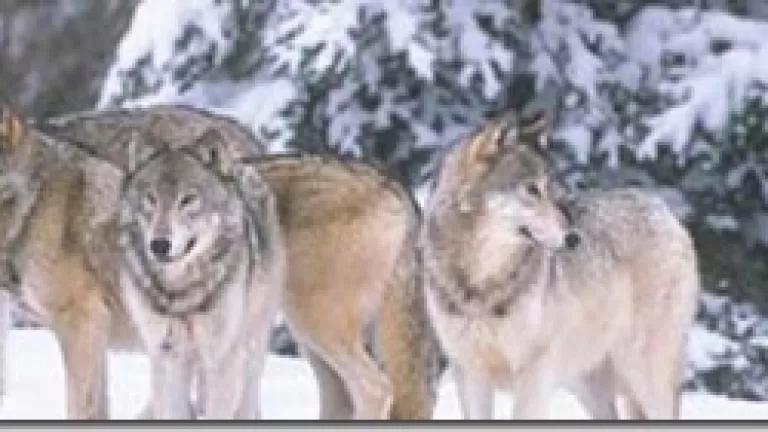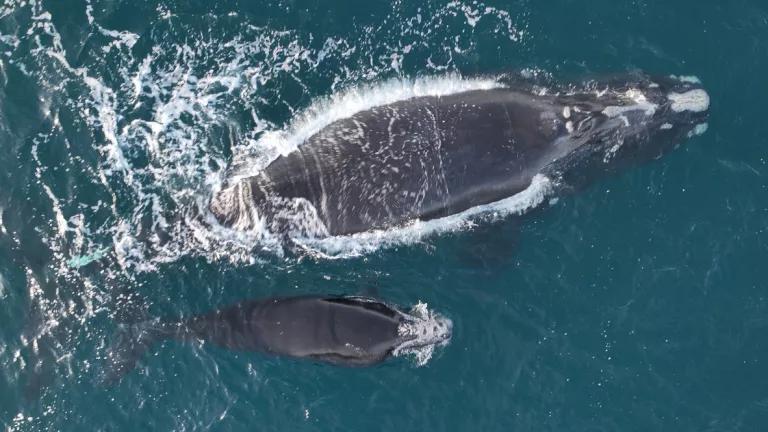
Today, the U.S. Fish and Wildlife Service proposed to remove Endangered Species Act protections for gray wolves throughout the lower-48 states and Mexico (with the exception of a small group of about 75 wolves in Arizona and New Mexico).
This sweeping proposal would close the door on wolf recovery long before the job is done. Large swaths of suitable wolf habitat remain unoccupied, because wolves are only just beginning to disperse from, and colonize beyond, the northern Rocky Mountain and western Great Lakes regions (the only two places wolves are currently “delisted”).
In recent years, lone wolves have traveled into the northeastern U.S., the Dakotas, Missouri, Indiana, Utah, Colorado, northern California, western Oregon, and western Washington. Wolves are finally regaining a foothold in Washington’s northern Cascade Mountains, where they have re-established three packs.
But this progress will only continue if federal protections remain in place. States are notoriously aggressive in managing wolves: Idaho’s wolf hunting season is nine months long in several districts; Wyoming allows wolves to be shot on sight across about 85% of the state; Montana is proposing to increase bag limits to five wolves per person for its upcoming hunting and trapping season; Minnesota’s legislature removed the five-year moratorium on hunting or trapping wolves contained in the original wolf management plan shortly after wolves were delisted; Utah’s legislature recently appropriated $300,000 to a sportsman group to lobby in favor of delisting wolves nationally (so that wolves will never be able to return to Utah).
The Endangered Species Act requires federal agencies to conserve threatened and endangered species until they are no longer in danger of becoming extinct “throughout all or a significant portion of” their range. Wolves’ historic range included nearly all of the contiguous United States. While much of the American landscape has changed and wolves will never occupy their entire former range, significant chunks of suitable habitat remain, including in California, the Pacific Northwest, the southern Rockies, and the Northeast. Federal agencies have not fulfilled their congressional mandate until gray wolves are recovered in these areas.
The U.S. Fish and Wildlife Services offers a number of flawed reasons for a national delisting. For example, the Service now believes that an “eastern wolf,” which it claims is a different species than the “gray wolf,” historically occupied the eastern U.S. Therefore, the Service argues, gray wolves should be delisted in 29 eastern states, because that was not their historic range. However, as we have previously explained, the best available science indicates that the “eastern wolf” is not a separate species and likely just represents historic hybridization between gray wolves and coyotes. And, even if the eastern wolf was a different species, that would not have precluded eastern wolves and gray wolves from historically occupying overlapping habitat in the eastern US. In fact the leading canid researchers have made this precise argument to the Fish and Wildlife Service already.
However, while recovery of a species is supposed to be based on the best available science, the Service has already admitted that rather than following science, they are choosing to make this a political decision. In today’s press, Dan Ashe, the Director of the Fish and Wildlife Service says, ‘‘Science is an important part of this decision, but really the key is the policy question of when is a species recovered. Does the wolf have to occupy all the habitat that is available to it in order for it to be recovered? Our answer to that question is no.’’
Respectfully, he's wrong. Gray wolves are still recovering in the lower-48 states. Great potential remains for continued recovery into significant portions of their former range in the West and Northeast. An across-the-board delisting at this time would effectively stop wolf recovery in its tracks. The Service should withdraw its proposal, keep current federal protections for wolves in place, and help guide this amazing conservation story to a successful end.




